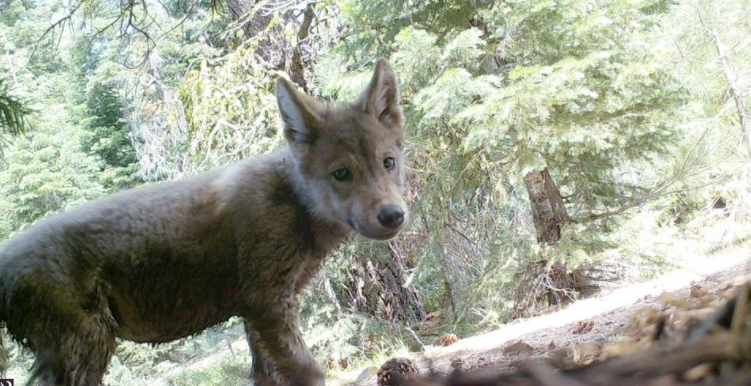
While hard to believe, it’s almost that time again: the 5-year review of the Oregon Wolf Conservation and Management Plan. The ‘wolf plan’, which was first adopted in 2005, included a provision to have the Oregon Department of Fish and Wildlife (ODFW) and Commission review and update it every five years. This was done to ensure that the living document kept up with emerging best available science, incorporated new applied learning based on lived experience, and reflected current endangered species listing status.
The last wolf plan review was completed in 2019 after several years of delay to accommodate ODFW’s (illegal and premature) campaign to end state protection’s for Oregon’s wolves. That revision intentionally fell far short of prioritizing conservation in favor of simply killing wolves. In particular, the door was opened to a future wolf hunt, standards were lowered for when ODFW could kill wolves, and non-lethal requirements were relaxed.
But it doesn’t have to be that way. As we gear up for the next review process, it’s important to remember that it IS possible to have a wolf plan that doesn’t lead to more dead wolves, more dead livestock and more conflict. While the livestock industry and their allies are calling for expanded wolf hunting, we need our decision-makers to have the fortitude to follow credible science and the will of the majority of Oregonians.
Here are the pillars of what a real wolf conservation plan for Oregon would look like:
- No trophy hunting (including keeping the pelts of wolves killed), general hunting or trapping seasons, or deputizing members of the public to kill wolves.
- Increase penalties for wolf poaching and funding for enforcement. Consider legislative reform including closing loopholes for wildlife crimes like ending the McKittrick Policy (allows a poacher to avoid any penalties for killing a wolf if they claim they thought it was a coyote). Include language that makes addressing poaching as significant a priority as addressing claims of livestock loss.
- Only “count” predations for livestock operations employing sufficient and demonstrated non-lethal conflict deterrents to prevent conflict. Killing wolves should be a last resort when other measures fail, not a reward for poor livestock management.
- Create a threshold for when state-sanctioned wolf killing can occur that allows non-lethal measures time to work and makes killing an option of last resort.
- Increased and timely public transparency including for what non-lethal techniques are being deployed, including making details of what non-lethal techniques have been tried public before kill permits can be issued.
- Direct funding to independent, credible scientists (not agriculture and livestock organizations) to conduct Oregon-based studies of carnivore behavior and ecology that can help reduce conflict and inform management decisions.
- Close loopholes in the state compensation program, including those that give payouts for cows grazing illegally and reward bad record keeping, and audit the program biannually to reduce waste, fraud, and abuse. Compensation should be tied to livestock operations implementing meaningful efforts to prevent future conflict with wolves.
- No use of taxpayer-provided equipment (telemetry, ATV's, etc.) may be used for wolf hunting by citizens.
- No killing wolves for eating deer and elk, their natural prey. Habitat loss from logging, off-road vehicles, and livestock, together with poaching, pose a vastly greater threat to deer and elk than wolves.
- Investigations into livestock predation and other consequential decisions should only be made by independent experts without conflicts of interest. Final decisions approved by independent ODFW staff.

